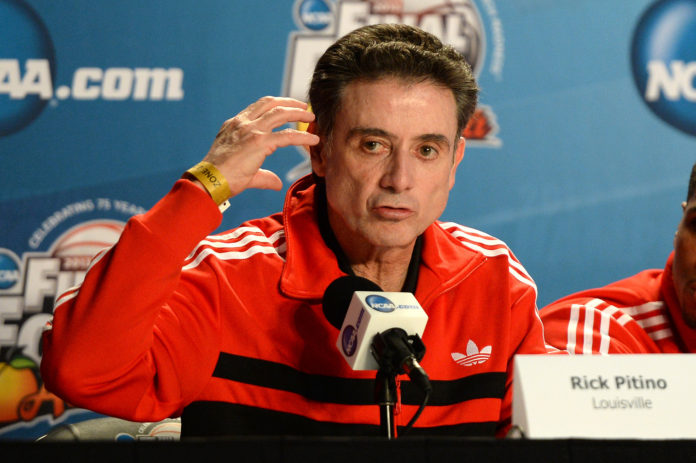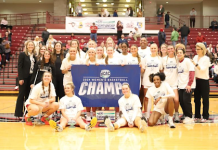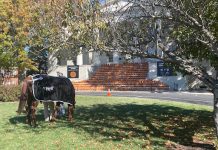When the news broke on September 26th that there was an ongoing FBI investigation revolving around payments made to recruits, their families, and to their coaches in order to have them commit to playing basketball at particular universities, the sports world froze in time. There was finally some proof for what many fans had suspected for decades at this point, that high-level Division 1 programs were using impermissible benefits in order to gain commitments from student athletes. While this scandal is news to many, something like this should not be a surprise given the way that high-level Division 1 athletics function.
The University of Louisville was referenced as University 6 in the report that came from the FBI pressing corruption charges against four assistant coaches of college basketball teams. The charges were made public during a press conference held by the US Attorney’s office for the Southern District of New York. The report stated that an employee of the athletic apparel company Adidas offered $100,000 to Brian Bowen, a five star recruit who was slated to play his first season of college basketball for the Cardinals this fall, to guarantee that he would play for Louisville as well as sign an endorsement deal with Adidas when he turned pro. This comes soon after the conclusion of an NCAA investigation involving the University of Louisville assistant coach Andre McGee. The investigation found that McGee provided impermissible benefits in the form of paying for escorts while recruits were visiting the school. As a result, the basketball team was required to vacate the wins in which players who received these benefits played; to return money that was earned from appearances in the NCAA men’s basketball tournament while ineligible players were on the team; a five-game suspension for head coach Rick Pitino; as well as a postseason ban for the 2015-2016 season. Rick Pitino denied any knowledge of the impermissible benefits that student athletes received from McGee. This week’s report claimed that Pitino, referenced as coach 2, knew of the payment made to Brian Bowen by an Adidas executive on behalf of the university.
These violations put the University of Louisville’s basketball program in a position where they could receive the very rare “Death Penalty” from the NCAA. The Death Penalty refers to when the NCAA suspends the operation of a team at a member institution. This penalty has only been used three times in the history of NCAA Division 1 sports. The last program in Division 1 to receive the Death Penalty was Southern Methodist University in 1987 for repeated recruiting violations that included cash payments as well as the provision of cars and apartments to players before they committed and while they were members of the team. The fallout from the SMU situation has lead the NCAA to avoid issuing the Death Penalty due to how it crippled the entire athletics department at the school for decades. There have been close calls since then, such as the Penn State issues surrounding former assistant coach Jerry Sandusky’s molestation of children and the subsequent cover-up by the University, and an investigation into numerous sexual assaults committed by members of the Baylor football team.
Another similar situation to the University of Louisville scandal is the recruiting violations committed by assistants of former University of Kentucky head coach Eddie Sutton which resulted in the University being banned from postseason play for two years as well as not having their games televised for 1 year, on top of losing scholarships that they could offer to players. Interestingly, the coach that was brought in after this scandal was Rick Pitino. Because the framework of college athletics has changed since the late 1980’s when this occurred, it would be extremely unlikely that the NCAA would consider giving out this type of penalty today.
While Rick Pitino was in the wrong, I do think, in this instance, that Pitino was not doing anything out of the ordinary if he knowingly allowed payments to be made to players in order to ensure that they came to the University of Louisville. Seven schools in total were named in this FBI report, including Louisville. These are just the schools for which there was clear evidence of these violations. To say that these are the only schools that have broken the rules would be based off a lack of information. This report came from an investigation of only one major company in the college sports spectrum. Adidas is the second most common sports apparel provider in major Division 1 athletics. They have contracts with 20 of the top 65 teams in Division 1 athletics, while Nike has deals with 44 teams. To assume that only the named schools or only Adidas schools are providing potential students with impermissible benefits is just wrong. These benefits would not be happening or would at least not be as great if there was not a bidding war going on for players.
This bidding war for players has been happening for decades. Schools are always competing for the best players. Whether it is who has the best practice facilities or the best dorms for the players, schools always want to be on top, but facilities and housing can only go so far. In order for mid-level schools to be able to compete for these top players, these schools often have to provide other things to get a player to commit. Rumors can be heard all the time that such and such player received some amount of money to get them to commit. The current investigation is just a situation where proof has been found about this going on and, on top of that, proof that shoe companies have been providing these benefits. It has often been challenging for investigators to prove these accusations because, at the end of the day, it is not in the best interest for anyone that is involved, because the NCAA has much to gain from these players attending and competing at their member institutions
The shoe companies, the schools, the players, and even the NCAA, benefit from these players being paid to play. The schools, shoe companies, and the NCAA gain the prestige of these top-level players being associated with them, while the players receive financial compensation. This works for everyone involved even if it does violate the rules that the NCAA themselves make. This brings into question what the NCAA is trying to accomplish, whether it is to provide an even playing field for college athletics or to improve the profits of universities and thus provide an avenue for people to make money off of college athletics.





